Lecture 2
Prologue
August 28, 2024
Prologue
Why Data Analytics?
- Fill in the gaps left by traditional business and economics classes.
- Practical skills that will benefit your future career.
- Neglected skills like how to actually find datasets in the wild and clean them.
- Data analytics skills are largely distinct from (and complementary to) the core quantitative works familiar to business undergrads.
- Data visualization, cleaning and wrangling; databases; machine learning; etc.
- In short, we will cover things that I wish someone had taught me when I was undergraduate.
You, at the end of this course

Why Data Analytics?
- Data analysts use analytical tools and techniques to extract meaningful insights from data.
- Skills in data analytics are also useful for business analysts or market analysts.
- Breau of Labor Statistics forecasts that the projected growth rate of the employment in the industry related to data analytics from 2021 to 2031 is 36%.
- The average growth rate for all occupations is 5%.
Why R, Python, and Databases?

Why R, Python, and Databases?
Stack Overflow is the most popular Q & A website specifically for programmers and software developers in the world.
See how programming languages have trended over time based on use of their tags in Stack Overflow from 2008 to 2022.
Most Popular Languagues
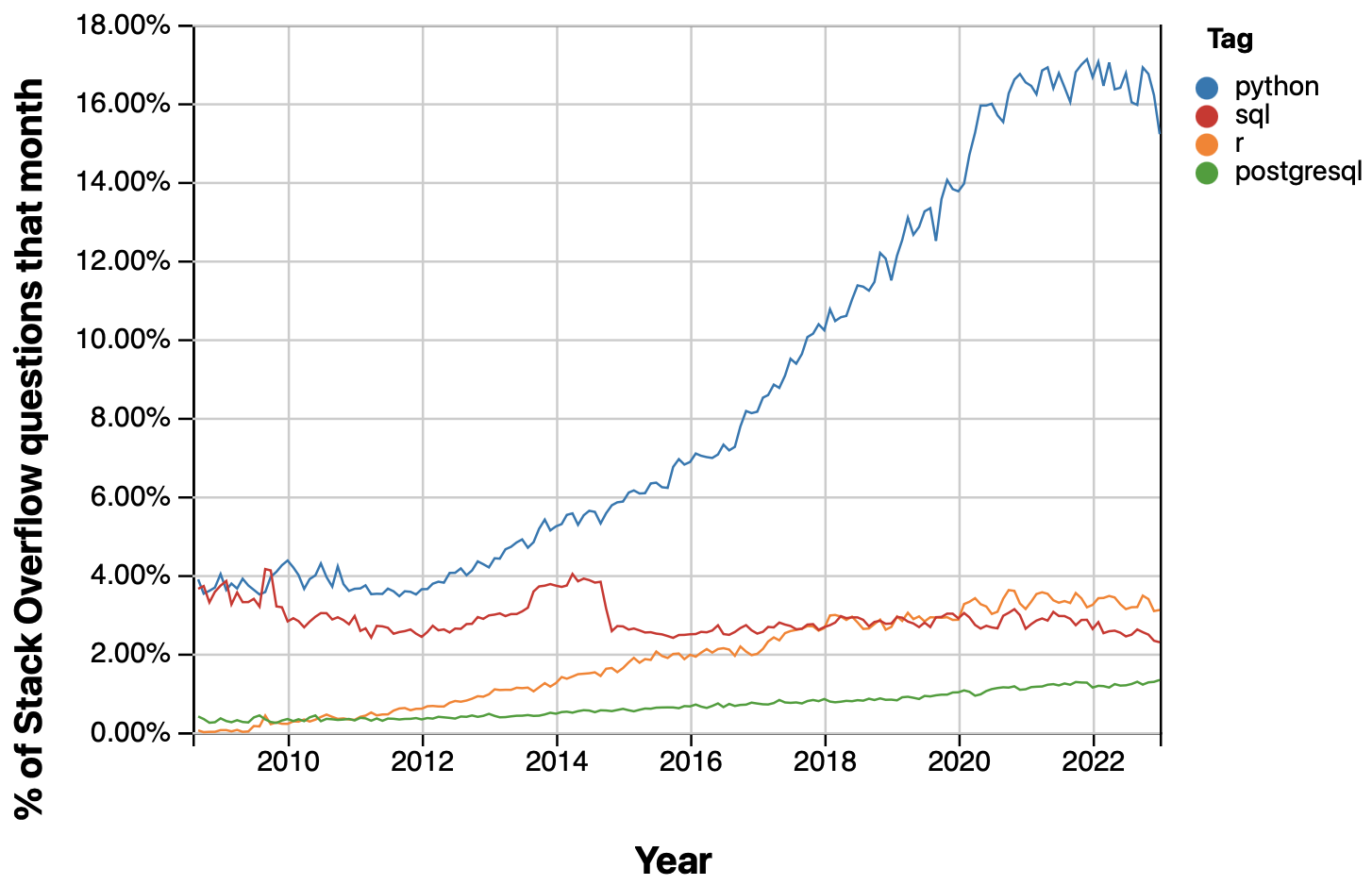
Data Science and Big Data
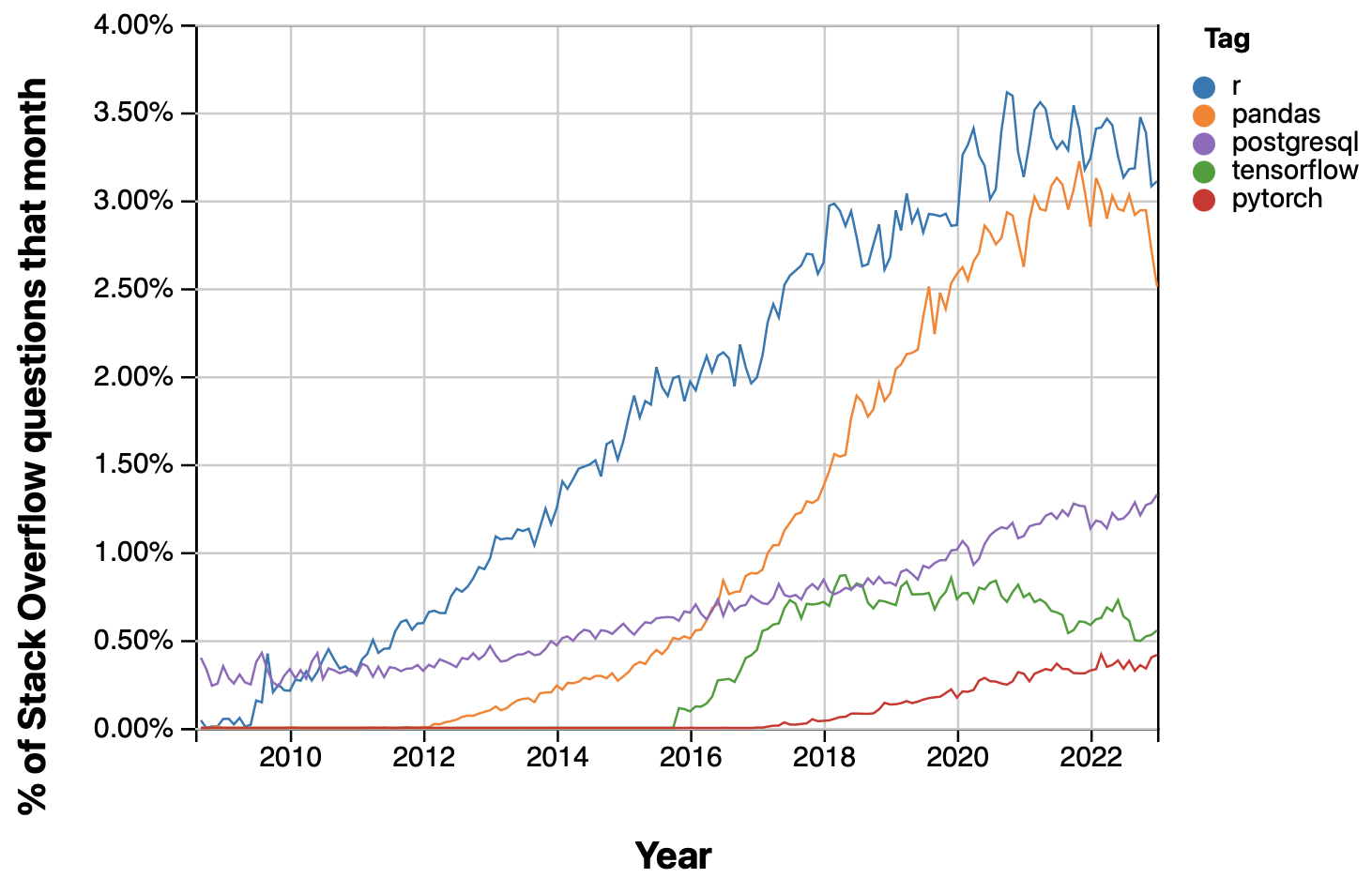
The State of the Art
Generative AI and ChatGPT
Data Science and Big Data Trend
From 2008 to 2023
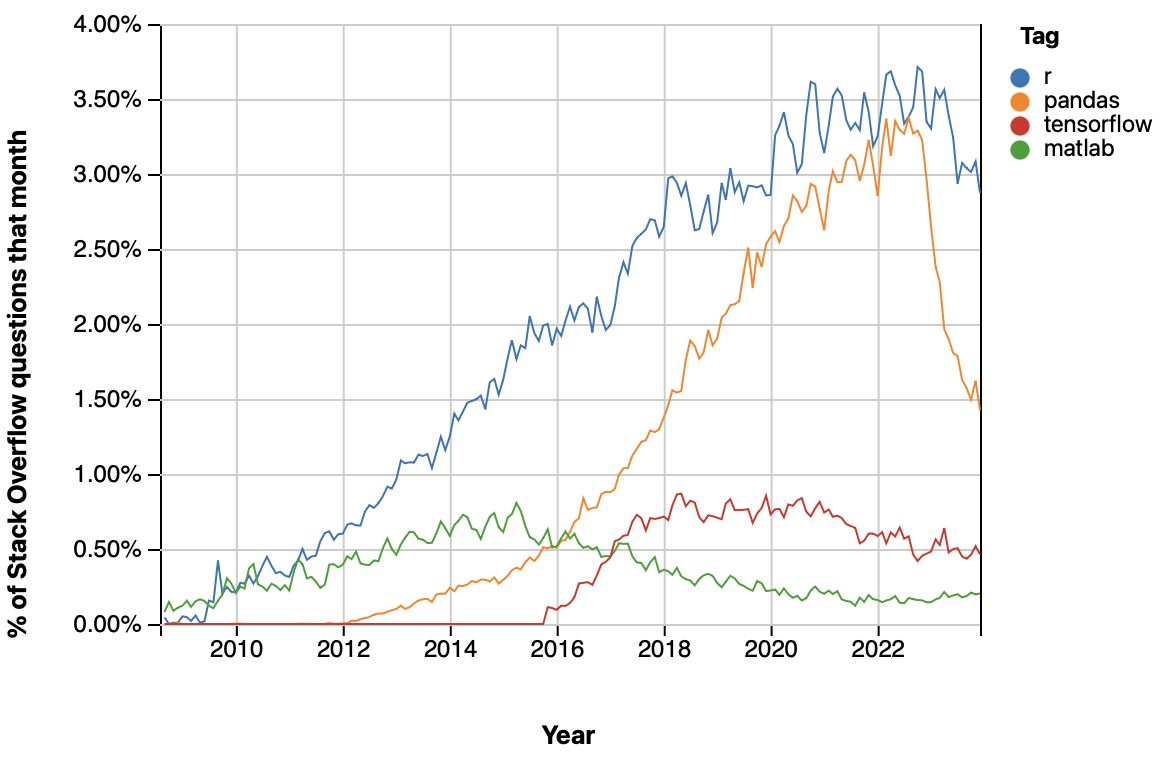
Programmers in 2024
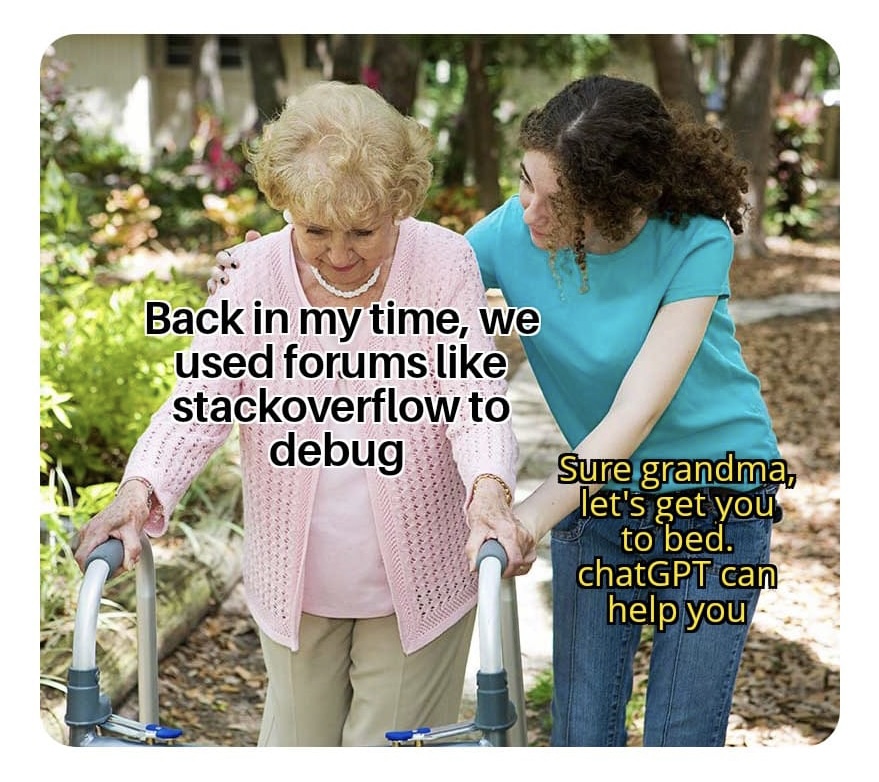
The State of the Art
Generative AI and ChatGPT
- Generative AI refers to a category of artificial intelligence (AI) that is capable of generating new content, ranging from text, images, and videos to music and code.
- In the early 2020s, advances in transformer-based deep neural networks enabled a number of generative AI systems notable for accepting natural language prompts as input.
- These include large language model (LLM) chatbots (e.g., ChatGPT, Claude, Copilot, Gemini, LLaMA, Grok).
- ChatGPT (Chat Generative Pre-trained Transformer) is a chatbot developed by OpenAI and launched on November 30, 2022.
- By January 2023, it had become what was then the fastest-growing consumer software application in history.
The State of the Art
Generative AI and ChatGPT
- Users around the world have explored how to best utilize GPT for writing essays and programming codes.
- Is AI a threat to data analytics?
- Fundamental understanding of the subject matter is still crucial for effectively utilizing AI’s capabilities.
- If you use Generative AI such as ChatGPT, please try to understand what ChatGPT gives you.
- Copying and pasting it without any understanding harms your learning opportunity.
DANL Tools
What is Git?
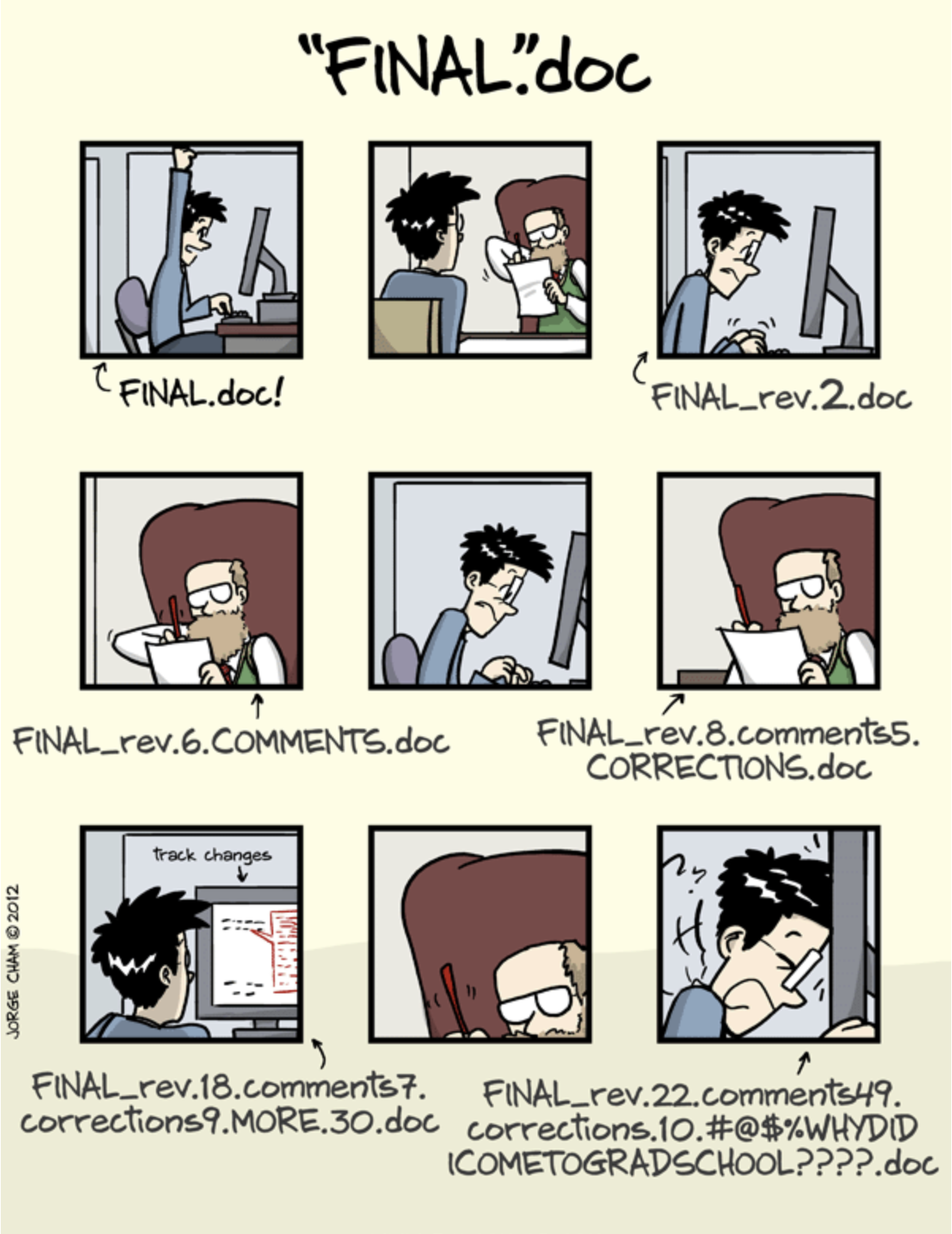
\(\quad\)
- Git is the most popular version control tool for any software development.
- It tracks changes in a series of snapshots of the project, allowing developers to revert to previous versions, compare changes, and merge different versions.
- It is the industry standard and ubiquitous for coding collaboration.
What is GitHub?
GitHub is a web-based hosting platform for Git repositories to store, manage, and share code.
Out class website is hosted on a GitHub repository.
Course contents will be posted not only in Brightspace but also in our GitHub repositories (“repos”) and websites.
Github is useful for many reasons, but the main reason is how user friendly it makes uploading and sharing code.
What is GitHub?
What is R?
R is a programming language and software environment designed for statistical computing and graphics.
R has become a major tool in data analysis, statistical modeling, and visualization.
- It is widely used among statisticians and data scientists for developing statistical software and performing data analysis.
- R is open source and freely available.
What is RStudio?
- RStudio is an integrated development environment (IDE) for R.
- An IDE is a software application that provides comprehensive facilities (e.g., text code editor, graphical user interface (GUI)) to computer programmers for software development.
- RStudio is a user-friendly interface that makes using R easier and more interactive.
- It provides a console, syntax-highlighting editor that supports direct code execution, as well as tools for plotting, history, debugging, and workspace management.
- We will use a free cloud version of RStudio, which is Posit Cloud.
What is Python?
Python is a versatile programming language known for its simplicity and readability.
Python has become a dominant tool in various fields including data analysis, machine learning, and web development.
- It is widely used among developers, data scientists, and researchers for building applications and performing data-driven tasks.
- Python is open source and has a vast ecosystem of libraries and frameworks.
What is Jupyter?
- Jupyter is an open-source integrated development environment (IDE) primarily for Python, though it supports many other languages.
- Jupyter provides a notebook interface that allows users to write and execute code in a more interactive and visual format.
- Jupyter Notebook is a user-friendly environment that enhances coding, data analysis, and visualization.
- It offers a web-based interface that combines live code, equations, visualizations, and narrative text.
- Jupyter is widely used for data science, machine learning, and research, enabling easy sharing and collaboration.
- We will use a free cloud version of Jupyter, which is Google Colab.